Our last day in Palm Springs (day 23) was a free day and as such, we hung out close to the pool, wandered around the downtown, and generally rested up for the continued adventure.
The next day (day 24) was a travel day with a side trip to Mohave National Preserve. There is a very interesting Visitor Center called Kelso Depot that (looks like it) is worth the visit. It was built in 1924 and was originally a train depot. Unfortunately, it is currently closed for repairs. Instead we visited Hole-In-The-Wall information center. Not as interesting from a design standpoint, but it got the job done. Meaning we got the National Park stamp we crave.
This is a site with a lot to do. There are several moderate hikes that are both longer and more physically challenging than most of the hikes I would do. We only ended up doing a single hike here, Hole-In-The-Wall nature trail.
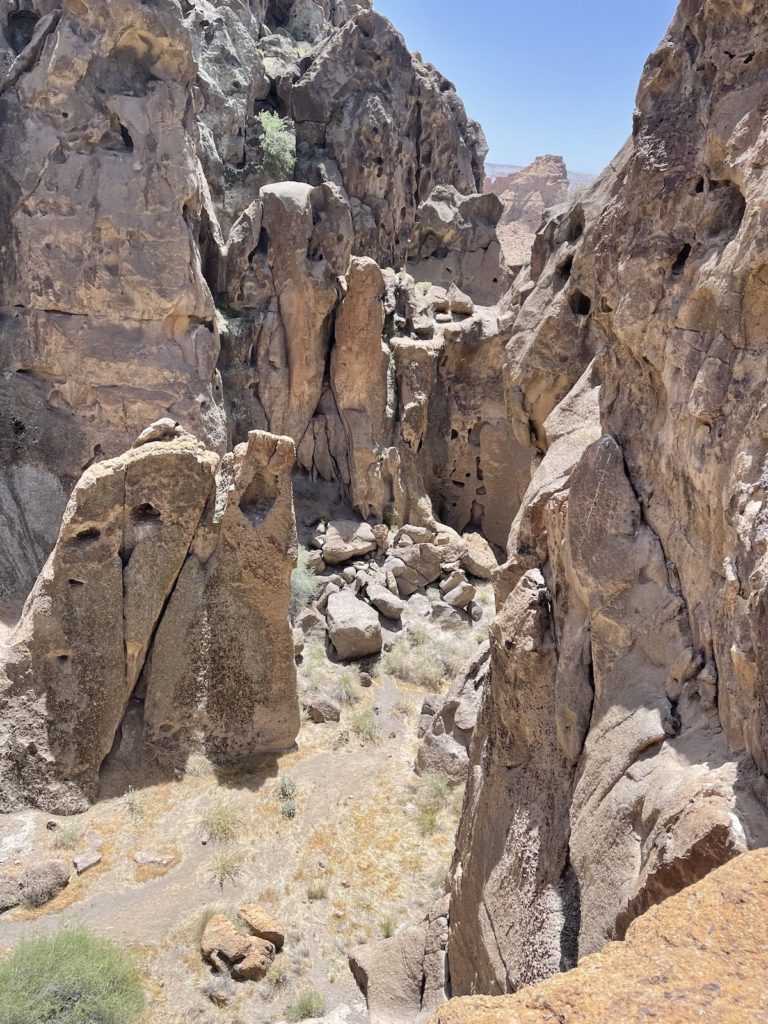

There are horseback trails as well as hunting options during the season here as well. That happens to be the major difference between a National Park and a National Preserve. In a preserve regulated hunting, fishing, and trapping are permitted.
When we arrived at Henderson, NV, which is more or less a suburb of Las Vegas, we stayed at Skyline Hotel and Casino. Neither one of us is a gambler so we never did go into the casino, but the hotel was great and our room was on the first floor with easy access to the things that mattered to us (the car and a big area to walk Duncan).
The next day our plan was to see Hoover Dam and Lake Mead so the first thing we did was head to a dog park to wear out Duncan. We found Bark Park at Henderson Park and Duncan got to run with the big dogs. He’s pretty much on or off so it doesn’t take long for him to get some good exercise.
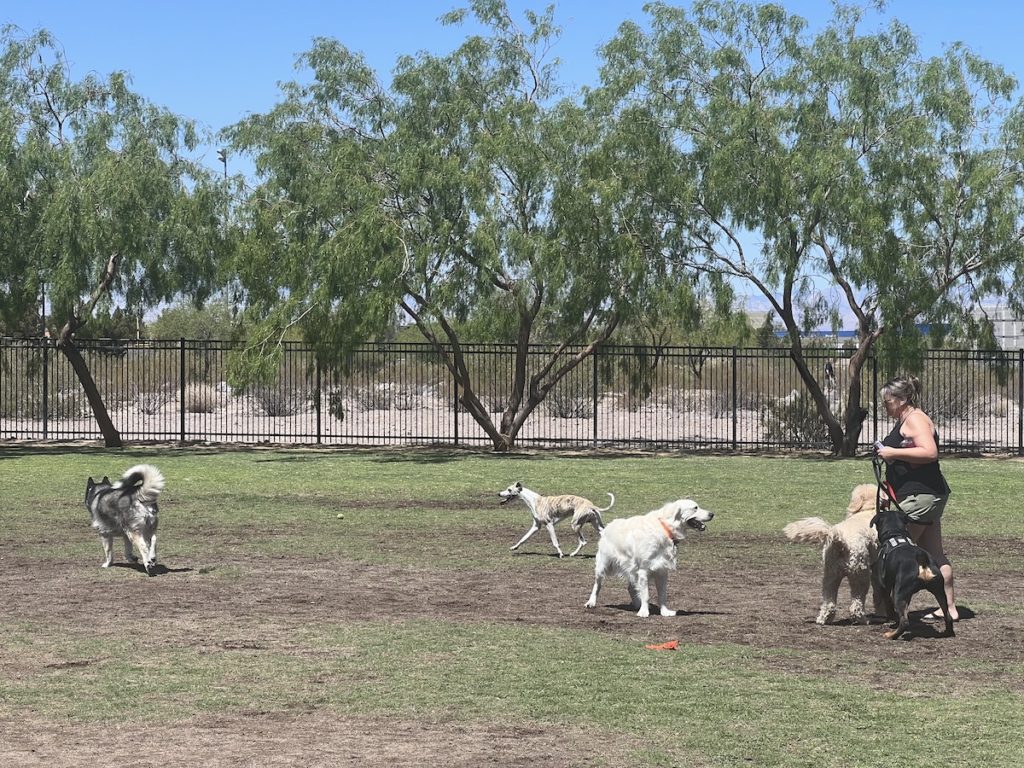
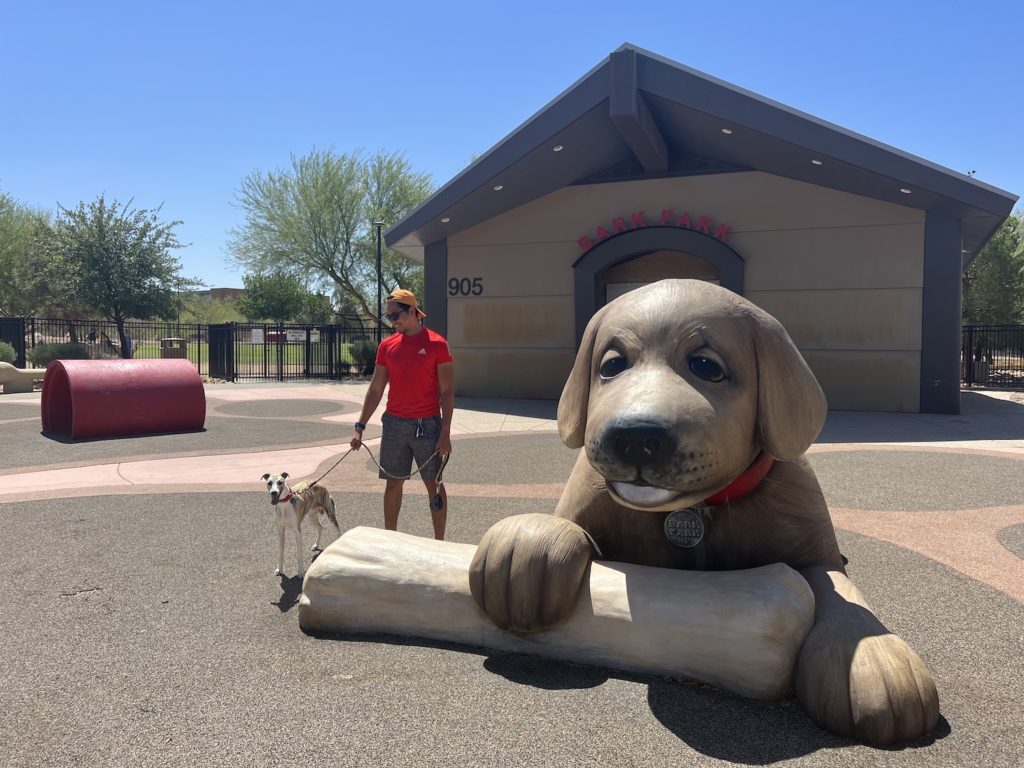
I remember Mom showing me pictures of their trip to Hoover Dam. It was before kids, but I can’t quite remember if it was a honeymoon or part of Dad’s stint in the military prior to them heading to Germany. If I figure it out I’ll add an update later. At any rate, Hoover Dam was built during the depression, but had been considered by several states, in several locations, for several years. The Colorado river had for a long time had issues with either too much or too little water. According to some, as early as the late 1800’s there had been attempts to find ways to control it for irrigation.
I am an electrical engineer and Dan is a civil engineer so I think the enormity of the undertaking at Lake Mead and Hoover Dam has impressed and overwhelmed us both. To think about all the engineering details that had to come together to create this project that would benefit so many and last for so long sort of boggles the mind. One of the best places to find information about Lake Mead, Hoover Dam, and the history and details surrounding them is here.
Until 2010 the traffic across the river in this area all passed over the dam. Before we went to see the dam we walked the bypass bridge, which opened on October 19, 2010, and took a picture of this beautiful and impressive view. The new bridge is called the Mike O’Callaghan–Pat Tillman Memorial Bridge.
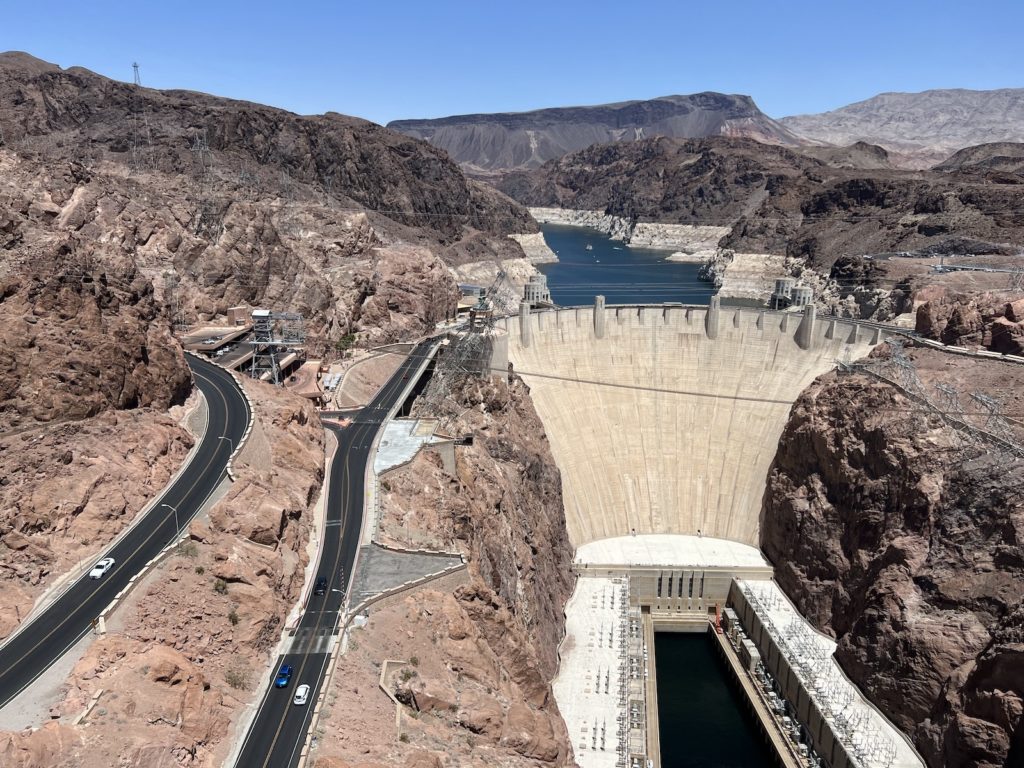
Here’s a picture from the dam, looking downstream and at the new bypass bridge. All the mechanical workings, hidden within the dam and the other facilities below are mind-boggling.
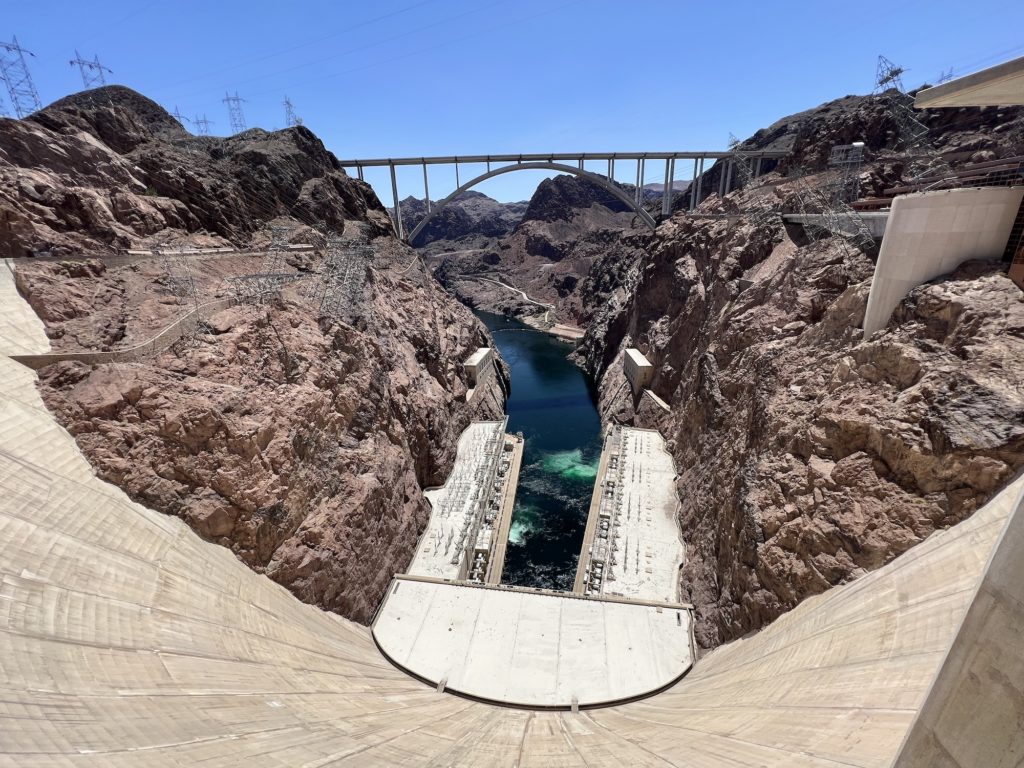
Lake Mead has changed levels over the years, as was expected, with the rainfall and other factors. It was at its maximum in 1983, somewhere around 1226 feet deep. Today it is close to the lowest point at about 1050 feet deep. If the drought in the southwest continues it could become a disaster for this project that has provided power and regulated water flow for over 85 years.
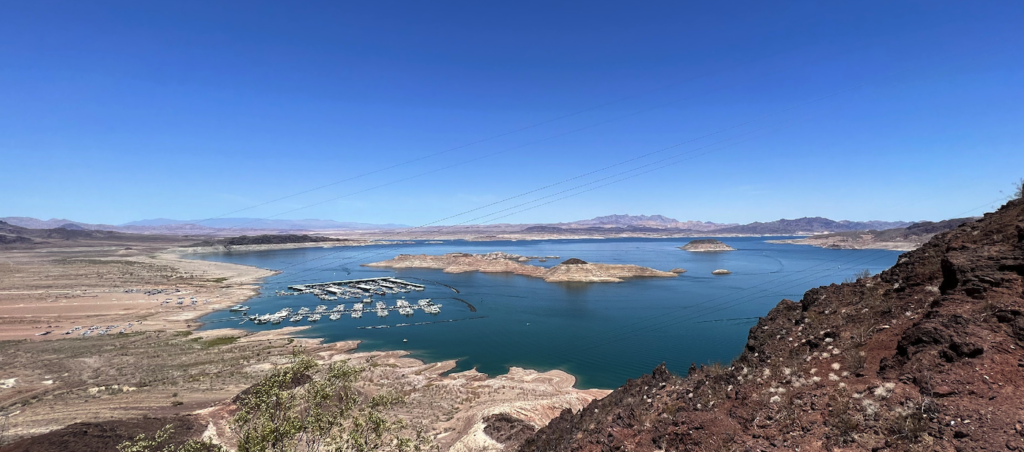
This picture shows Lake Mead at its lowest…right now. You can see that the lake provides a lot of recreational space for boating and a beach area for sun worshipers and swimmers. Twenty-five feet of additional water would spread out quite a bit back here.
Here is another picture of upstream, before the river gets back to the lake.
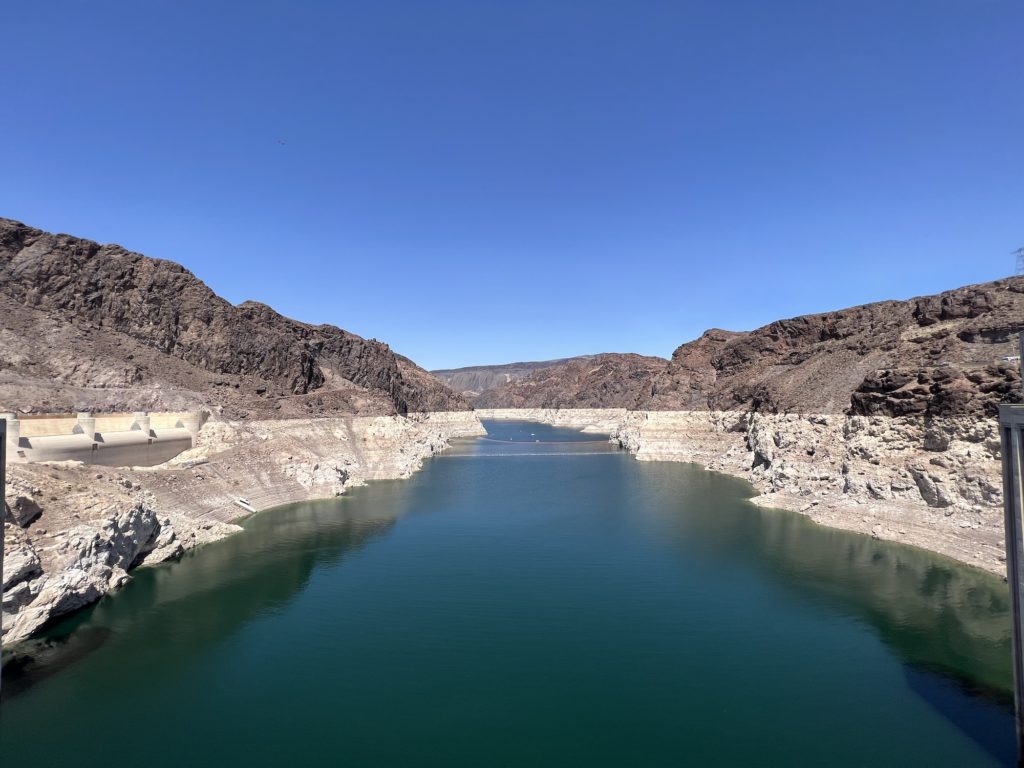
Finally, a bit about the artwork that is inside and outside Hoover Dam. I read this article and since I can’t say it any better I am going to quote the Norwegian-American Oskar J. W. Hansen who was responsible for much of the artwork design.
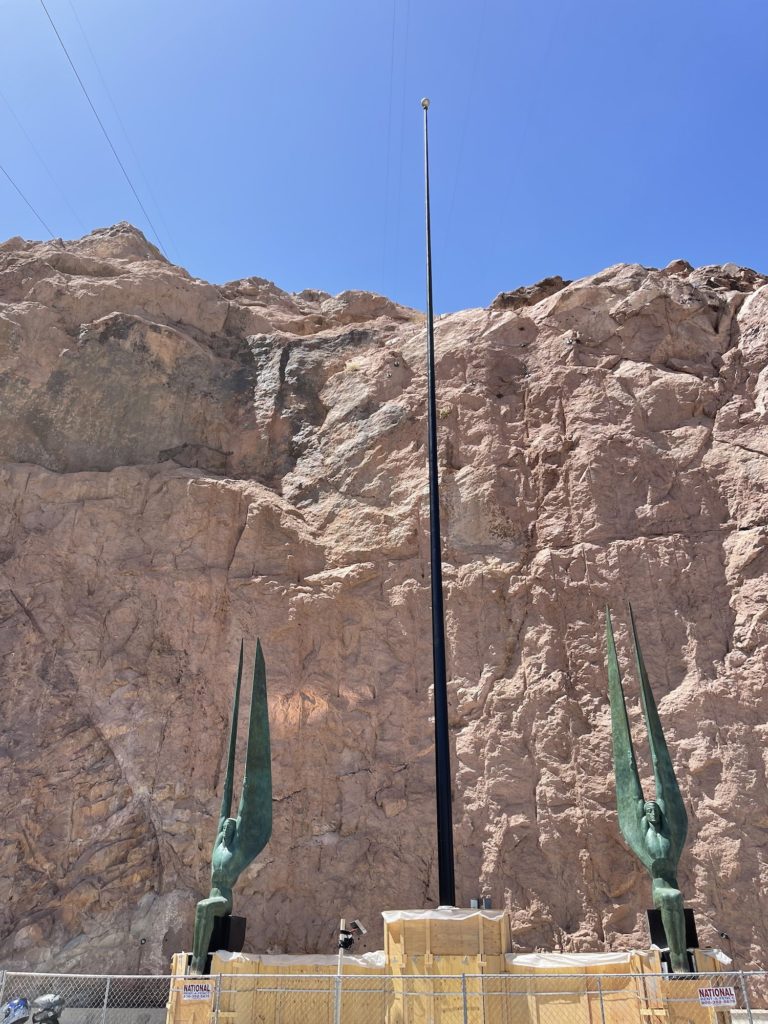
“The building of Hoover Dam belongs to the sagas of the daring. The winged bronzes which guard the flag, therefore, wear the look of eagles. To them also was given the vital upward thrust of an aspirational gesture; to symbolize the readiness for defense of our institutions and keeping of our spiritual eagles ever ready to be on the wing.”